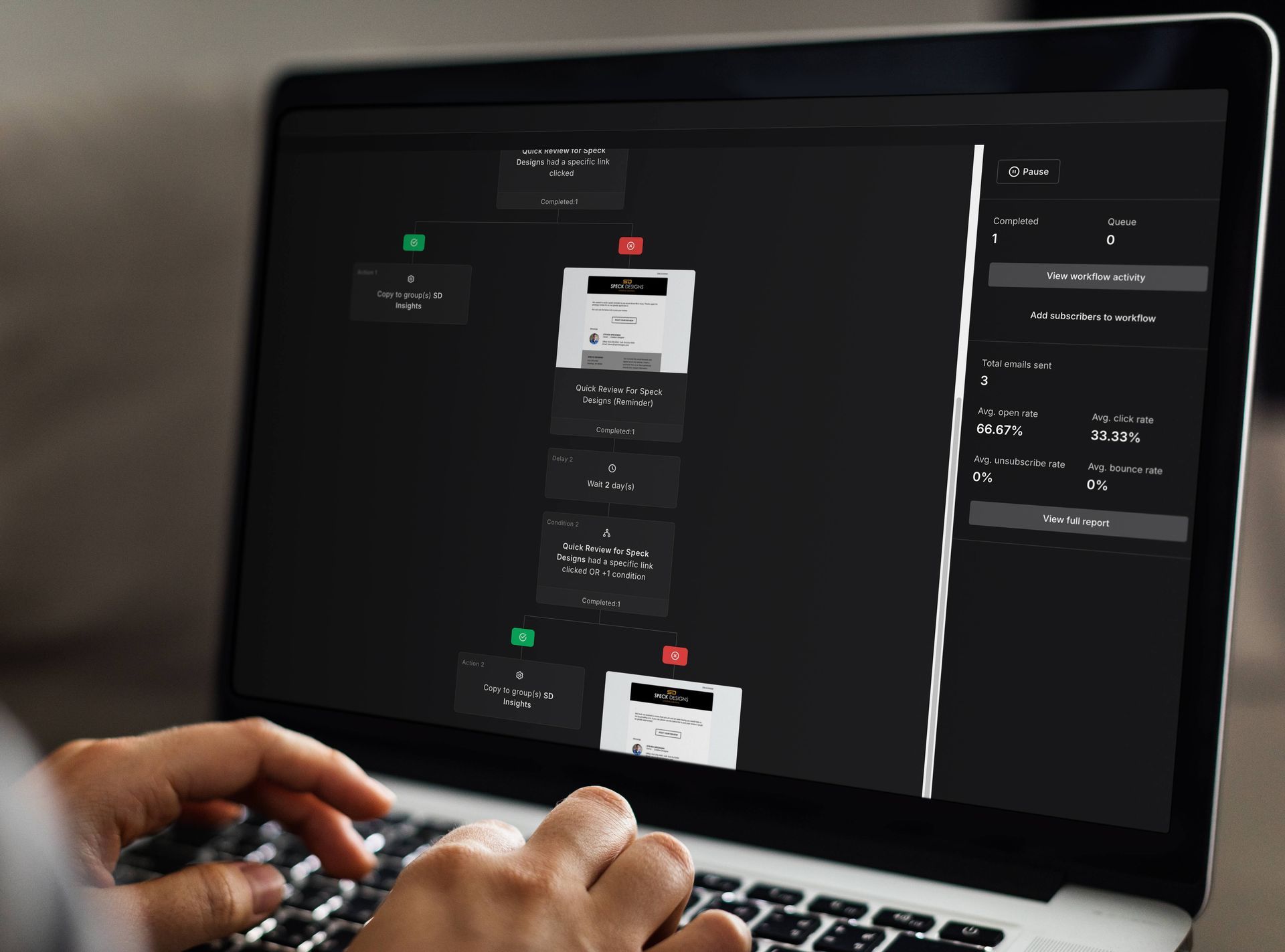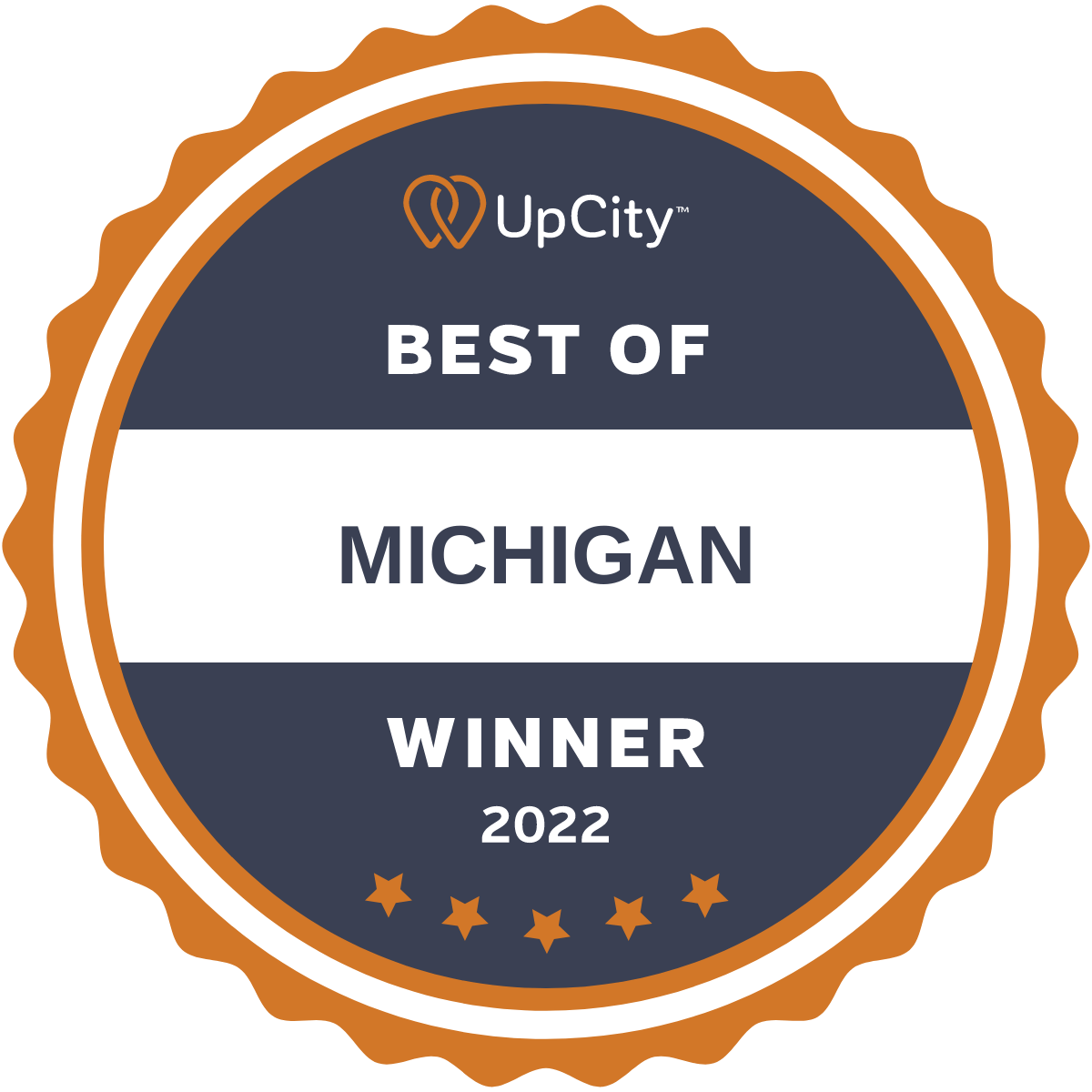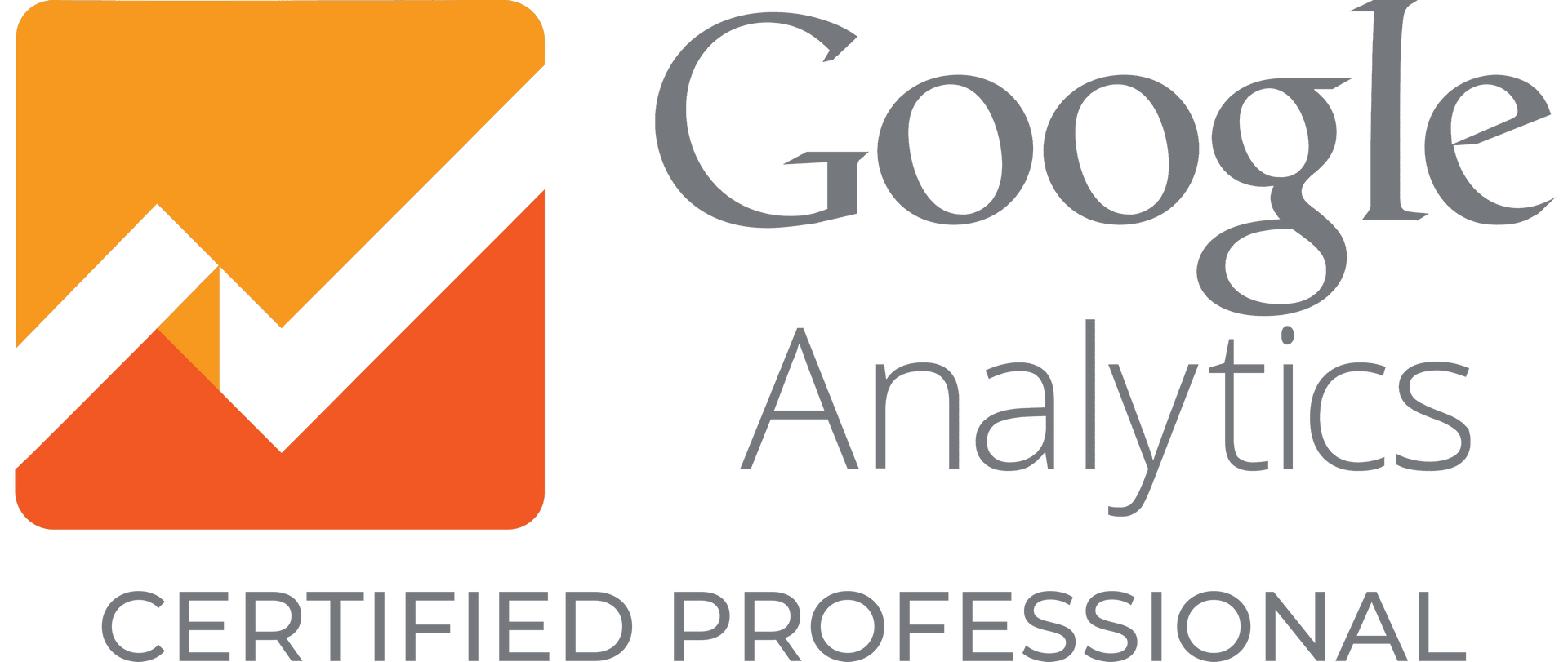How to Build a Follow-Up System for Local Service Businesses that Turns Leads into Loyal Clients
Prefer to listen to this blog post?
Converting cold leads into loyal clients starts with a strong automated lead follow-up system. Your approach to follow-up matters just as much as your message, playing a key role in lead conversion. Consistent, personal contact keeps your business top of mind for potential customers.
Ready for a better follow-up system? Schedule a Call with Speck Designs today to start converting more leads.

What Makes a Follow-Up System Work
Before trying every digital tool available, get the basics right with an effective follow-up system. Good timing is everything in lead follow-up—reach out while the interest is fresh, or you risk losing the lead to a competitor. An immediate response is key to maintaining engagement and moving the conversation forward.
Your communication should feel personal, not like an auto-blast sent to everyone. Tailored communication shows people you genuinely care about their needs. Every touchpoint in your system must offer something useful, whether it’s a helpful answer, a tip, or a special deal.
Use different channels to widen your reach—email, text, phone, and ads. Stay consistent, but ensure you provide value with each contact so you’re not overwhelming anyone. Always track your results and be ready to adjust your system for better performance.
Step 1: Respond Fast and Keep Leads Warm
When a new inquiry arrives, don’t wait to follow up. A quick lead response is crucial to maintaining interest. Using automation enables you to reply instantly via email or text, thanking them and outlining the next steps. Tools like Mailchimp and HubSpot can handle automated lead follow-up as soon as someone fills out your form or downloads a freebie, streamlining your lead capture process.
Your message should remind them why they reached out, deliver what you promised, provide a brief overview of your business, and include a clear call to action such as “Browse Our Products” or “Schedule a FREE Consultation.” Personalize communications by using their name and tailoring messages based on their actions for optimal results.
Retargeting ads also support lead management by targeting visitors who have engaged with your site but haven’t converted yet. This tactic keeps your business top of mind and can highlight current offers or share positive customer reviews.
For promising inquiries, send the details directly to your sales team. CRM platforms like Salesforce or Zoho CRM help assign new contacts to the right person, ensuring no automated lead slips through the cracks during the lead follow-up process.
Step 2: Build Trust and Share Knowledge
After your first contact, focus on educating your lead and winning their trust through consistent follow-up. Share valuable information without always pushing for the sale.
Set up an email sequence designed for effective lead nurturing that drip-feeds helpful content. This might include articles, guides, or answers to common questions. Over time, explain how you solve their problems, share testimonials from other clients, address common concerns, and provide a clear next step to guide leads through the sales funnel.
Avoid treating all leads the same by segmenting your list so each group receives content tailored to their specific interests.
Content marketing positions you as the expert. Offer practical blog posts, host live webinars, publish guides or videos, and respond to the questions people actually ask. Use this content across emails, your website, and social media platforms.
Maintain open communication by connecting where your audience spends time. Host live sessions, reply to direct messages, and encourage community through groups and regular updates. Providing genuine value encourages people to engage with your business.
Step 3: Move Leads Toward Booking or Buying
As leads engage more, focus on guiding them through the sales process to the next step—scheduling services or making a purchase.
A personalized, one-on-one approach enhances the customer experience, especially for larger jobs. Use your CRM to review lead history and tailor your sales pitch accordingly. Reference previous interactions when making suggestions, and arrange meetings or demos that align with their specific needs.
Special offers can boost conversion rates. Send limited-time discounts via email, set up retargeted ads for those who abandoned their carts, or deliver flash deals through text messages to opted-in contacts.
Live chat and chatbots provide immediate responses online, around the clock. Bots can manage basic inquiries and gather essential information, while staff handle more detailed conversations to support the sales effort.
Promote one-on-one meetings and virtual walkthroughs through emails, website prompts, and social media posts. Incorporating easy scheduling tools can significantly improve conversion and overall sales performance.
Step 4: Keep Clients Coming Back
Your job doesn’t end once a sale is made. Turn buyers into loyal fans who keep coming back and refer their friends.
Automation through onboarding emails helps new customers get the most out of your service. Begin with a warm welcome, followed by clear step-by-step instructions and direct links to support resources.
Outstanding customer support plays a key role in enhancing the overall customer experience. Make it simple for clients to find help with searchable help desks or easy access to your team. Encourage them to join online communities where they can share feedback and connect with others.
Leverage purchase history to boost sales through upselling or cross-selling. Recommend services that complement what they’ve already booked, and use timely emails or personalized ads to spotlight relevant options.
After a positive interaction, invite customers to leave reviews on Google or Yelp. Automated prompts can quickly elevate your reputation, especially when paired with a small thank-you gift.
Loyalty programs that operate within a well-designed system are effective. Offer exclusive discounts, early access to new services, or special perks to reward your regular clients.
Finally, don’t let lost customers fade away. Use lead follow-up strategies like personal notes, special offers, or quick surveys to understand how to win them back and drive additional sales.

Measure, Test, and Improve Your Follow-Up System
Keep your follow-up system effective by tracking key metrics and testing adjustments regularly.
Important numbers to monitor include:
- Email open and click-through rates
- Conversion rates within each campaign
- Time from lead to sales close
- Customer lifetime value
- Retention and repeat sales
- Website visitors and actions driven by follow-up efforts
- Social engagement generated by your follow-ups
Experiment with subject lines, timing, links, and ad designs through A/B testing to discover what drives the best results.
Gather feedback from surveys and your sales team to gain insights. Review your marketing platform’s reports to identify trends, challenges, and new opportunities to enhance how you engage with sales leads and nurture your lead generation efforts.
Ready to build an automated lead follow-up system that turns leads into loyal customers?
Let Speck Designs guide you.
Book your call now and start closing more sales.









